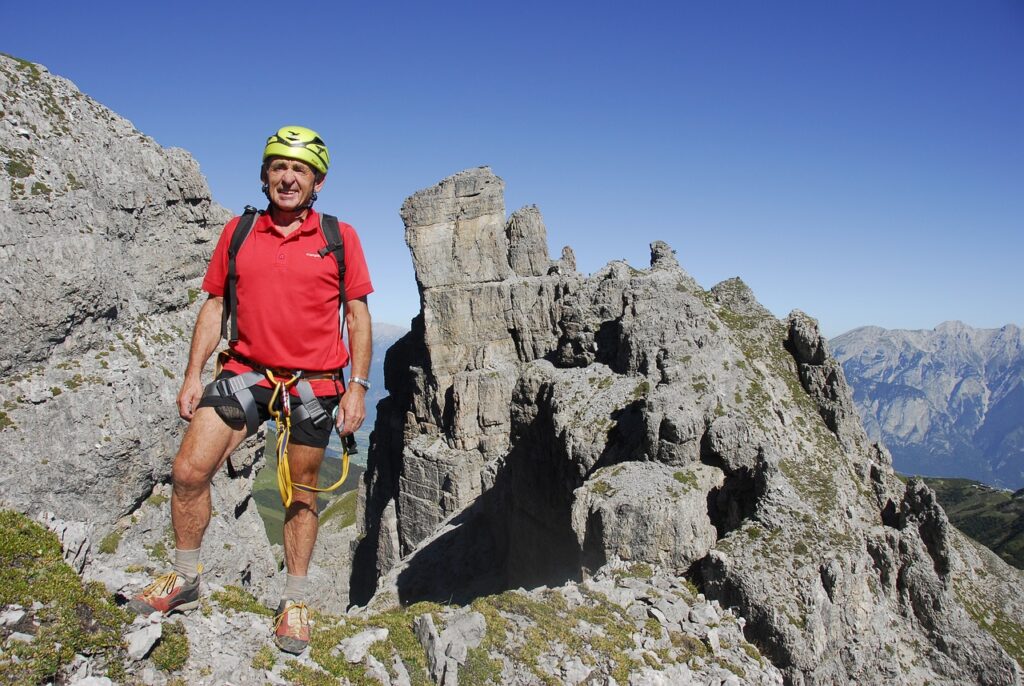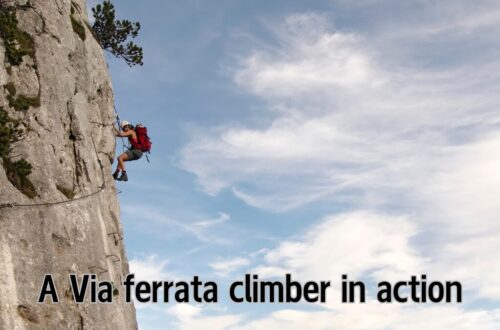Via Ferrata Punta Anna: A Thrilling Climb in the Heart of the Dolomites
The Via Ferrata Punta Anna is one of the most exhilarating and exposed via ferratas in the Dolomites, located in Veneto, Italy. Situated on the Tofana di Mezzo massif, this tough route is renowned for its steep ascents, breathtaking panoramas, and thrilling exposure. It offers climbers an adrenaline-pumping journey with a mix of technical climbing, sharp ridges, and great views over the surrounding peaks and valleys.
Click here for info about another incredible Via ferrata in Italy.
Overview of Via Ferrata Punta Anna
This via ferrata is considered one of the finest routes in the Dolomites due to its direct and airy ascent along the Punta Anna ridge. It is a demanding climb, requiring a good level of fitness and experience in via ferrata techniques. The route is well-equipped with cables, ladders, and iron rungs, but its sustained steepness and exposure make it a challenging endeavor even for seasoned climbers.
Key features:
- Technical Difficulty: A challenging via ferrata with sustained exposure.
- Breathtaking Views: Panoramic vistas of the Ampezzo Valley, Monte Cristallo, and the Marmolada Glacier.
- Direct Ascent: Climbers follow an exhilarating ridge with nearly continuous exposure.

Highlights of the Route
1. The Exposed Ridge Climb
The defining characteristic of Punta Anna is its continuous exposure. From the very beginning, the climb ascends steeply along an arête, with dramatic drop-offs on both sides. The route is well-secured, but climbers must be comfortable with heights and confident in their footwork.
2. Spectacular Dolomitic Scenery
Throughout the climb, you will be treated to jaw-dropping views of some of the most famous peaks in the Dolomites. The Cinque Torri, Monte Pelmo, and Monte Antelao create a stunning backdrop, while the valley floor stretches out far below.
3. Challenging but Rewarding Climbing
Unlike some via ferratas that feature long traverses or gradual ascents, Punta Anna is relentlessly steep. Climbers must be prepared for sustained vertical climbing and technical sections that demand careful movement and good physical endurance.
4. Connection to the Tofana di Mezzo Summit
For those who wish to extend their adventure, the Via Ferrata Punta Anna connects with the Via Ferrata Gianni Aglio, leading to the summit of Tofana di Mezzo (3,244 meters). This extension adds another layer of difficulty and excitement to an already thrilling route.
Click here for an unforgettable European adventure.
Practical Information
Access and Starting Points
The starting point for the Via Ferrata Punta Anna is the Rifugio Pomedes, which can be reached by hiking or by taking the Tofana Express chairlift from Cortina d’Ampezzo. From the rifugio, a short approach trail leads to the start of the via ferrata.
Difficulty and Grading
The route is graded Difficult (D) due to its steep and sustained climbing sections. While there are no extreme overhangs, the technical difficulty lies in the exposure, verticality, and physical demands of the climb. It is recommended for climbers with prior via ferrata experience.
Best Time to Visit
The ideal time to tackle the Via Ferrata Punta Anna is between late June and early October. Weather conditions in the Dolomites can change rapidly, so climbers should always check forecasts before setting out. Early morning starts are recommended to avoid afternoon thunderstorms.
Click here for a fantastic selection of adventure holidays in Europe.
What to Bring
Ensuring you have the right equipment is crucial for a safe and enjoyable climb. Here’s a checklist of essential gear:
- Via Ferrata Kit: Climbing harness, lanyards with energy absorbers, and a helmet.
- Sturdy Mountaineering Boots: Good grip and ankle support are needed for the rocky terrain.
- Gloves: Fingerless climbing gloves help protect your hands while gripping cables.
- Layered Clothing: The weather can change quickly, so pack a waterproof jacket and extra layers.
- Snacks and Water: Hydration and energy snacks are necessary for the physically demanding climb.
- Map and Guidebook: Useful for navigation and understanding route variations.
Safety Considerations
1. Physical Preparation
The climb requires a good level of fitness, especially due to the sustained nature of the ascent. Training on steep terrain and endurance exercises will help prepare for the route’s challenges.
2. Managing Exposure
The via ferrata is well-equipped but the exposure is significant. Climbers should be comfortable with heights and confident in their movements. Those with a fear of heights may find this route particularly daunting.
3. Weather Awareness
Mountain weather can change rapidly, bringing sudden storms and strong winds. Always check the forecast before climbing and be prepared to turn back if the weather gets worse.
4. Climbing in a Group
Climbing with a partner or small group is advisable for safety. If unfamiliar with the area or via ferrata techniques, hiring a guide is a great option.
Suggested Itinerary
Day 1: Arrival in Cortina d’Ampezzo
- Arrive in Cortina d’Ampezzo, the gateway to the Dolomites.
- Stay overnight in one of the town’s many hotels or mountain lodges.
Day 2: Climb Via Ferrata Punta Anna
- Morning: Take the Tofana Express chairlift to Rifugio Pomedes.
- Start Climb: Begin the ascent along the Punta Anna ridge.
- Enjoy the Thrilling Climb: Experience the steep, exposed sections and breathtaking views.
- Descent: Either descend back to Rifugio Pomedes or continue via the Via Ferrata Gianni Aglio to the summit of Tofana di Mezzo.
- Return to Cortina d’Ampezzo by evening.
Why Choose Via Ferrata Punta Anna?
The Via Ferrata Punta Anna is a must-do for thrill-seekers and experienced climbers looking for an exhilarating via ferrata adventure in the Dolomites. Its combination of technical challenge, dramatic exposure, and world-class views makes it one of the most rewarding climbs in the region. Whether tackling it as a standalone route or extending to the Tofana di Mezzo, this via ferrata promises an unforgettable experience in the heart of the Italian Alps.


